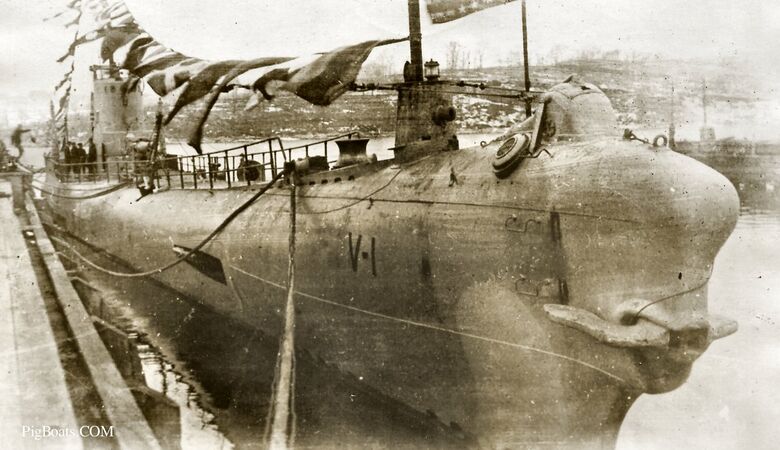V-1

This is a good look of the bow torpedo tube outer doors. Unlike subsequent practice, they do not smoothly fare into the outer hull. The pressure hull was a complex of various angles and diameters bringing the torpedo tubes to the hull's lowest point. The hull was a variety of shapes from circular to ellipses, making the construction very difficult for the shipyard.
U.S. Navy photo
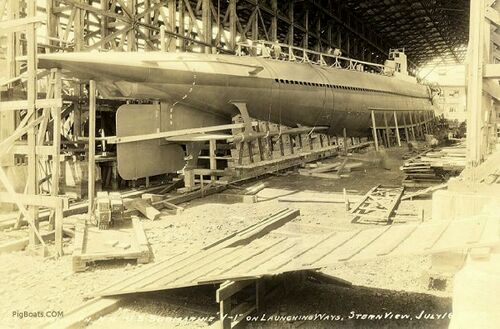
A large brace has been attached to the shaft struts and clamps together, over the top of the stern planes and aft of the rudder. This is to prevent damage to the rudder and stern planes as the submarine slides backwards into the water. Just above the rudder the two aft torpedo tubes can be seen.
U.S. Navy photo
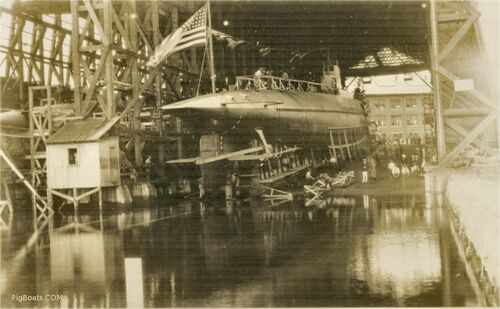
At the left in the photo, what is probably the V-2 sits on the ways. Just the slope of her stern, matching the V-1 stern, can be seen.
Photo in the private collection of Ric Hedman.
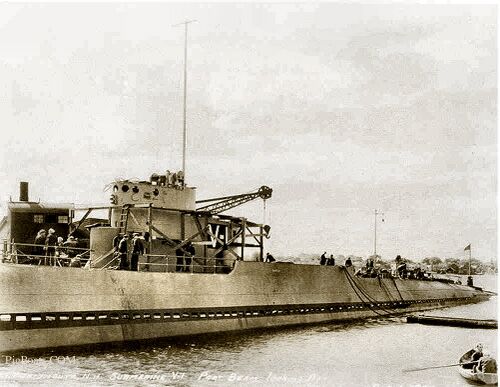
V-1 alongside the fitting out pier at the Portsmouth Navy Yard, Kittery, Maine. The date is late summer 1924 and there is still a lot of work to do to complete her construction phase and get her ready for sea trials. The big fleet boat dwarfed any submarine previously built at Portsmouth, presenting special challenges to the yard workers.
USN photo in the private collection of Ric Hedman.
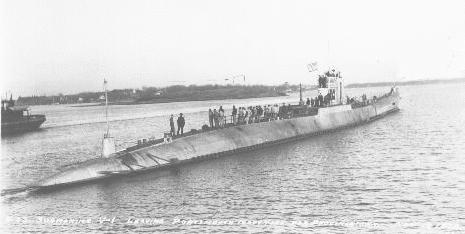
U.S. Navy photo
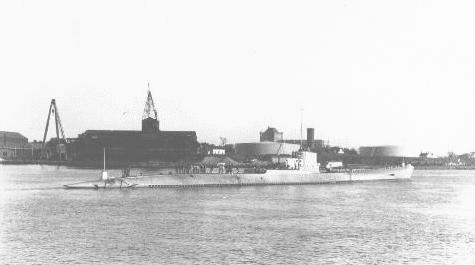
U.S. Navy photo
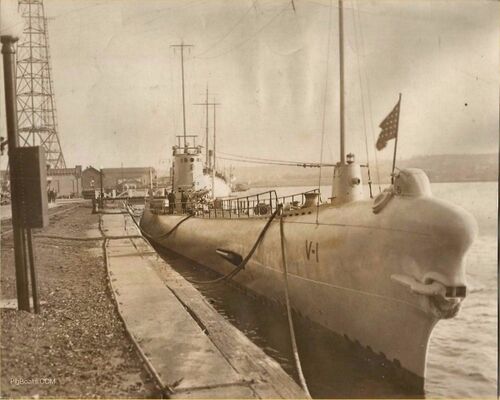
U.S. Navy photo
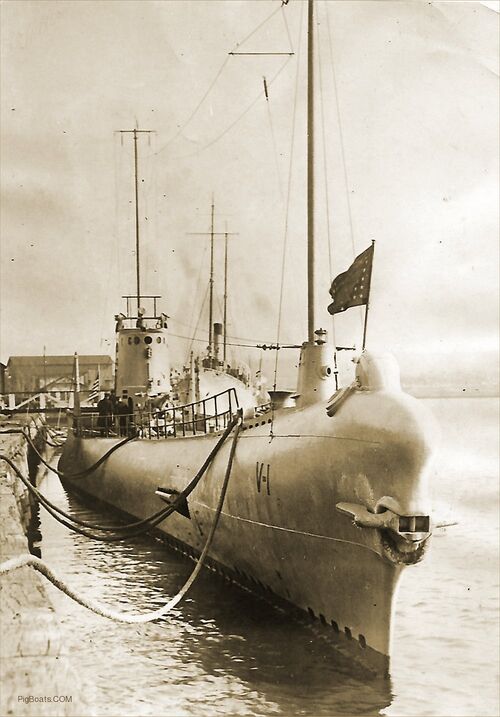
There is an unidentified yacht like ship in the background, possibly the Presidential yacht, Mayflower. The Mayflower had her small boats stowed on highly raised davits as seen in this photo and a clipper type bow as implied here. Detail is lacking for full conformation.
U.S. Navy photo
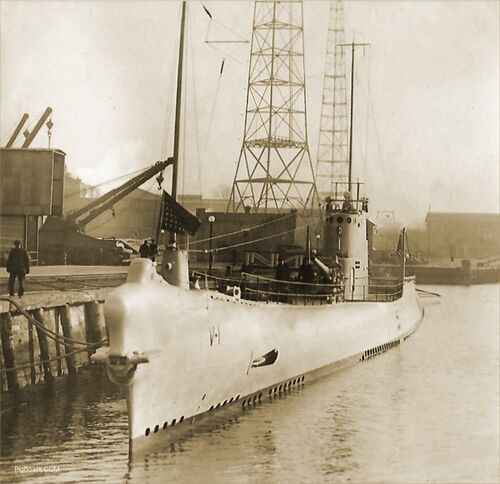
U.S. Navy photo
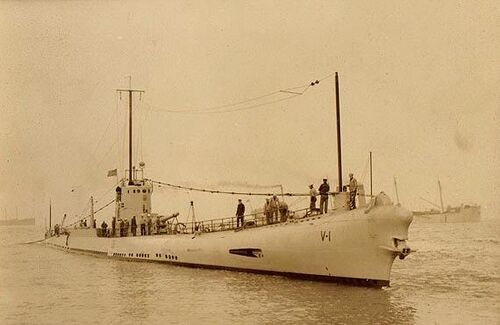
Photo courtesy of Ron Martini
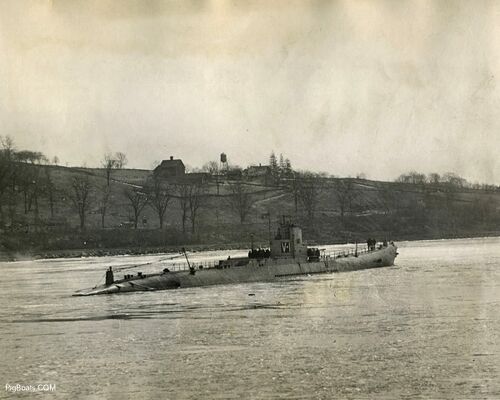
All three of her radio masts are lowered, indicating that she has just surfaced or is preparing to dive, although either maneuver would be dangerous this close to land.
It was reported in The Evening Leader of Corning, NY on Feb 20, 1925 the following: "Faizalli Mahrshacca. 20. Lascar¹ fireman in the British steamer Luceric, which came into Norfolk, Va., recently, had been denied shore leave and was determined to land in America. So when the ship was passing Thimble Shoals he threw a keg overboard and jumped after it, clinging to it through the chilly dawn. The submarine B-1² was proceeding down the harbor and sighted the Lascar, still clinging to his keg. He was almost frozen, but he fought against rescue and was subdued by force. The submarine carried the man to Cape Henry and placed him aboard the pilot boat Relief, which hastened to overtake the Luceric, and put the man back aboard her as she passed through the Virginia Capes"
1. Lascar; A semi-derogatory term for a sailor or militiaman from the Indian subcontinent, Southeast Asia, the Arab world, British Somaliland or other lands east of the Cape of Good Hope who was employed on European ships from the 16th century until the mid-20th century.
2. Referring to this boat as B-1 was likely a simple typo at the time by the reporter. V-1's name was changed to Barracuda on February 19, 1931 and between then and late 1938 she coincidentally had the class identifier "B-1" painted on the side of her fairwater, but this was not the boat's name. It certainly was not being used in 1925 when the article was written. See this article for more information on this confusing issue.
National Archives photo

One of the two ship's boats, stowed under the deck just aft of the conning tower fairwater when not in use, can be seen moored alongside. Forward of the conning tower can be seen a folding set of steps to allow access to the submarine from a small boat. These were folded back into the superstructure when not needed.
Photo in the private collection of Ric Hedman.
It was reported on April 30, 1926 that the V-1, while under command of LCDR Sherwood Picking, struck a large whale while submerged off Cape Cod. The submarine was in the act of surfacing when a sudden jolt shook the submarine. Upon surfacing a 58 foot long whale was found to be bent around the bow of the submarine. The collision had apparently broken the whale's back and killed it. The sub suffered no damage. The whale was towed into Provincetown before being towed back to sea and allowed to sink.
International Newsreel photo in the private collection of Ric Hedman.

Photo in the private collection of Ric Hedman.

Photo in the private collection of Ric Hedman.

Photo in the private collection of Ric Hedman.
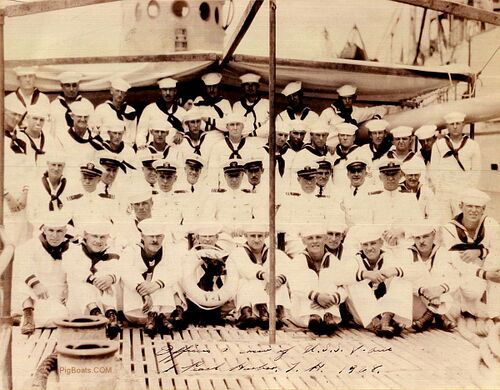
In the photo the fourth man from the left, second row from the top, is Herman S. 'Brigham' Young, grandfather of Johanna Young who submitted this photo.
The barrel of the V-1's 5"/51 caliber deck gun is pointed to the right in the photo to make room for all the men to be positioned at the widest point on the deck. The top man on the right is leaning on the barrel.
Original photo in the family collection of Johanna Young. MAY NOT BE REUSED OR REPOSTED WITHOUT PERMISSION.
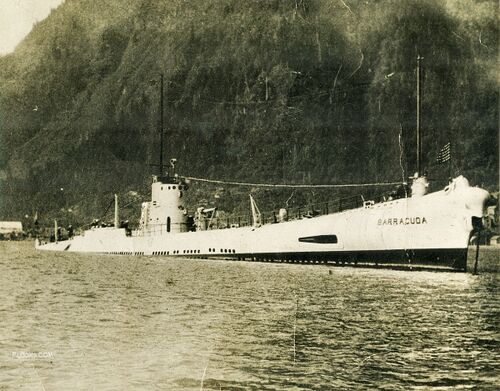
Photo in the private collection of Ric Hedman.
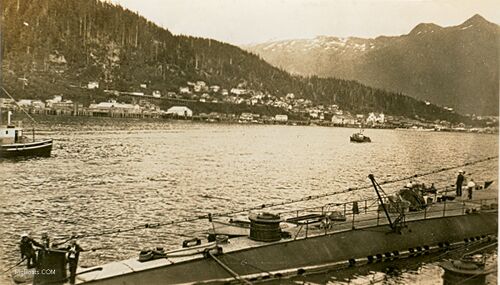
Photo in the private collection of Ric Hedman.
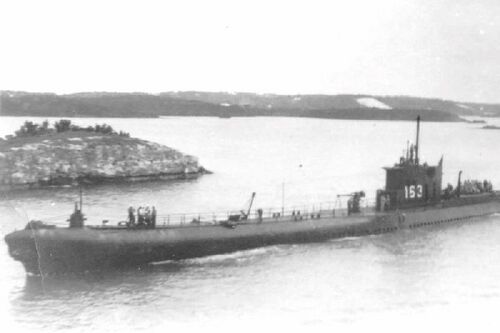
U.S. Navy photo
Page created by:
Ric Hedman & David Johnston
1999 - 2023 - PigBoats.COM©
Mountlake Terrace, WA, Norfolk, VA
webmaster at pigboats dot com

